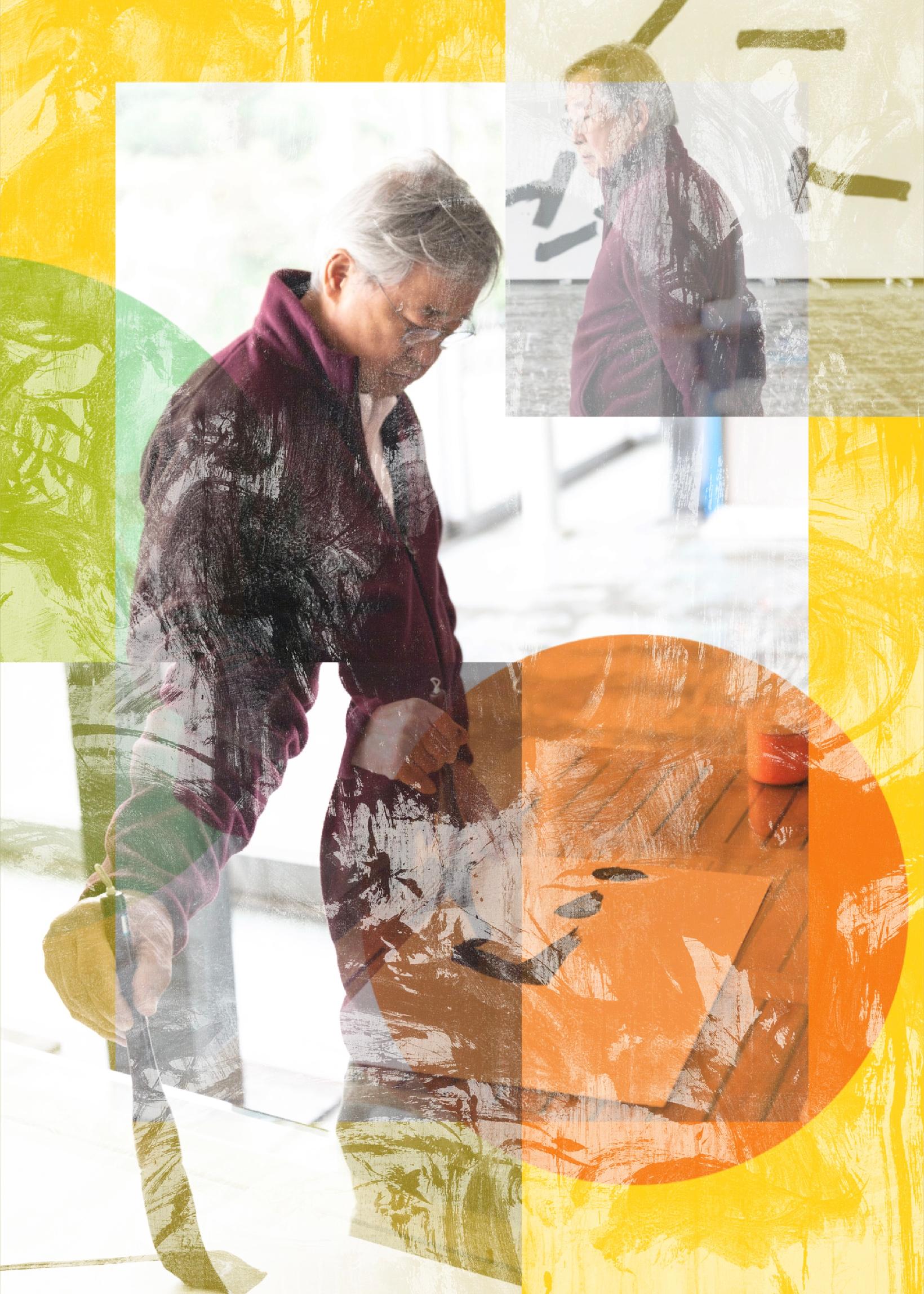
From a Dream is an exhibition, entirely focused on paintings. Would you introduce your new paintings?
I show works on canvas. Paintings drawn by the transitory self, paintings written like texts by my own self, unfamiliar every moment, and the paintings done with dazzling colors that captivated me. Also, the swift and slow speed of the strokes: those are what I have experienced. Then I have persistently striven to avoid marking habitual brushstrokes. If the viewers recall any specific images from my paintings, I wish that they penetrate through countless transient instants passing between these images by repeatedly looking between these gaps, although they will disappear in a glimpse. I wonder how an adventure of intuition can be activated. I am also interested in how the qi (氣) energy of paintings can stimulate the viewers.
We humans float in this grand universe like minute dust particles, picture illusions, and pursue them as the reality.
My paintings provide a source of inspiration for such illusions. I cannot illustrate a particular scene from the visual landscape or abstraction from my works.
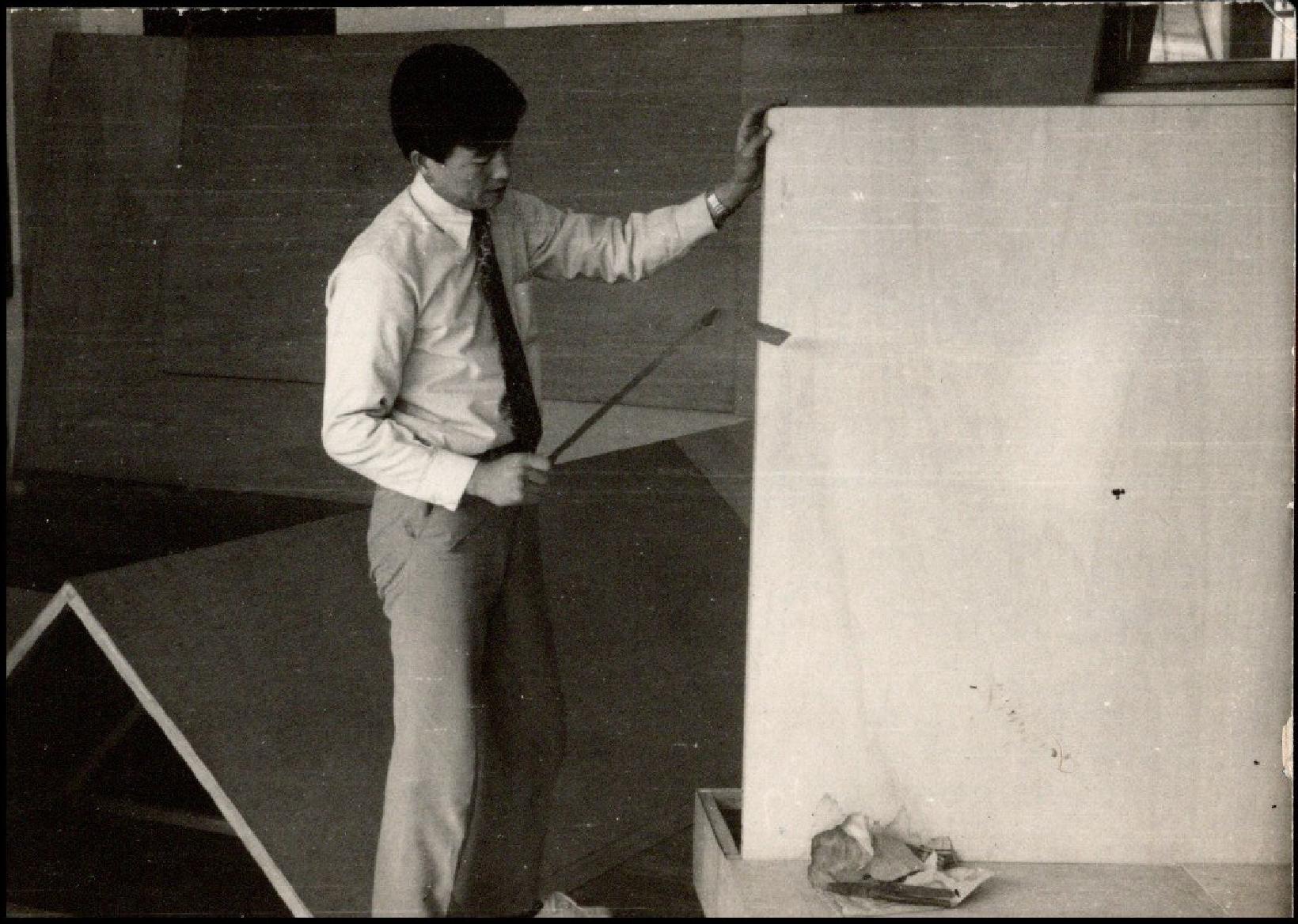
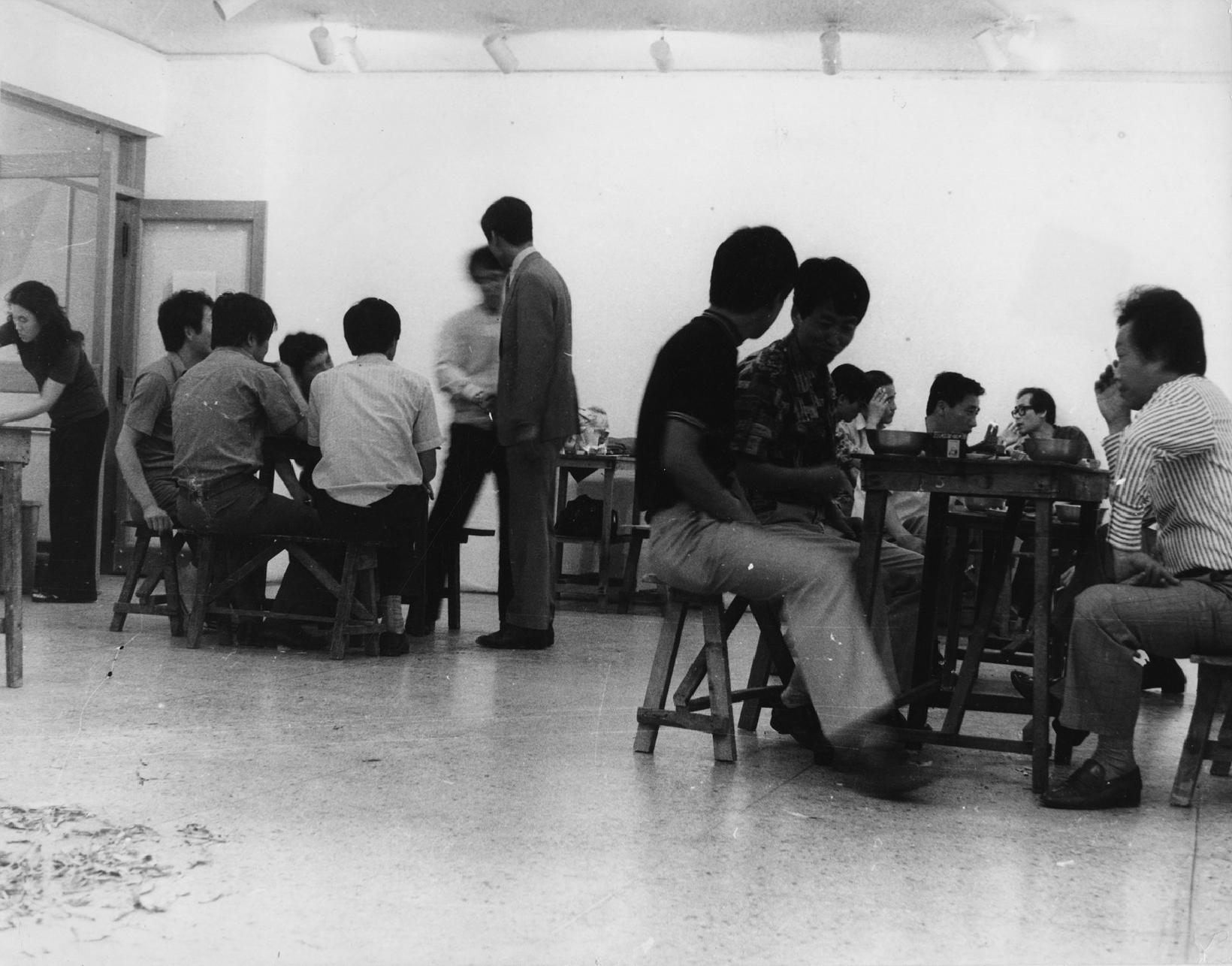
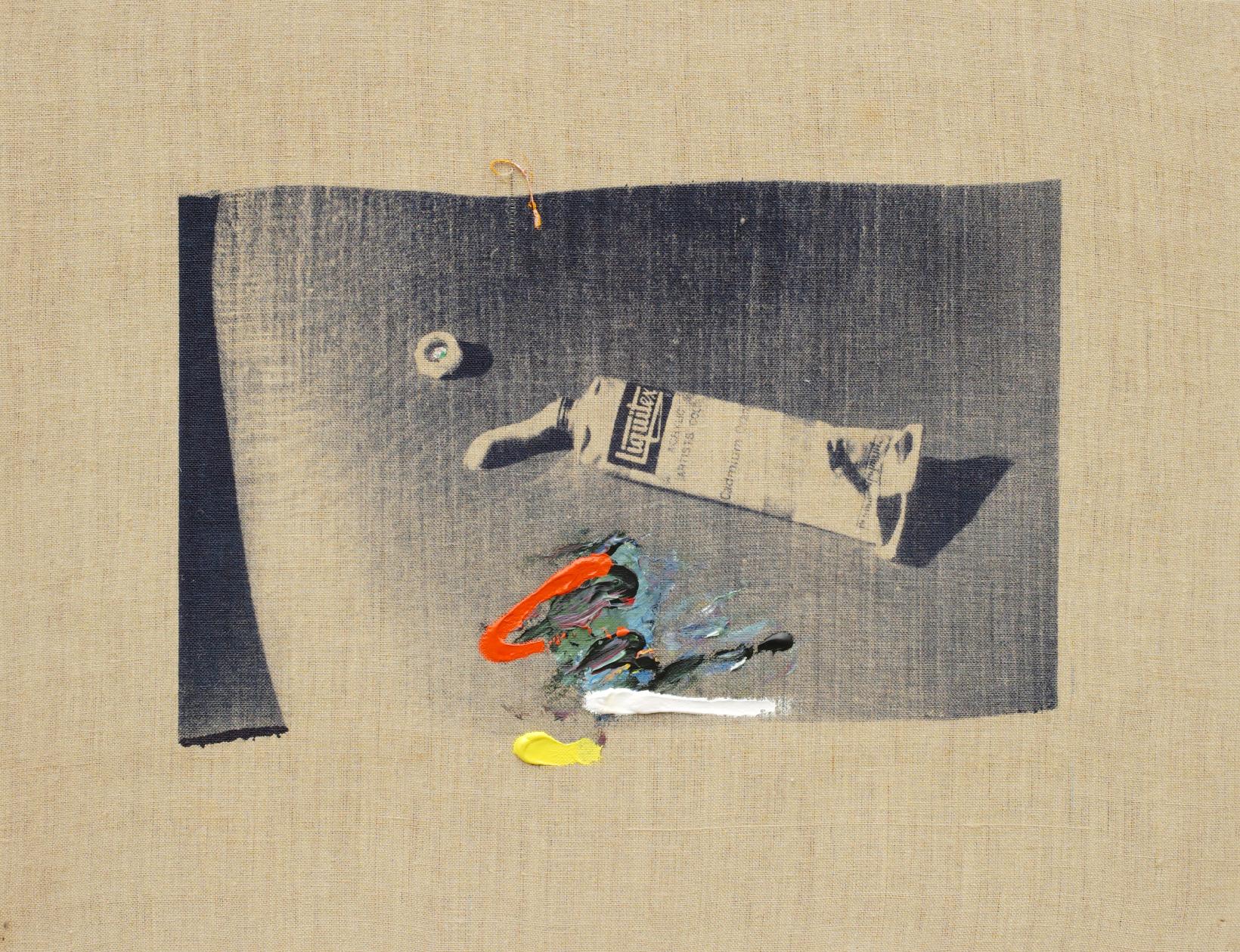
You have consistently delved into a question ‘what is painting?’ since the 1970s. Could you elaborate on the experimentation and exploration throughout this process?
During the mid-1970s, I aimed to realize a new type of two-dimensionality suitable for the contemporary era. I thought I should begin with interpretative works that allow me to understand and self-persuade what structures organize a two-dimensional painting. Therefore, I decided to first reconfirm its most fundamental structure. For instance, I made works by picking out a few strands of thread from a canvas, or picking out a couple strands of the canvas on which serigraphy is printed, and putting a little bit of paint on it.
During the early and mid-1980s, I experimented with leaving unregulated brushstrokes on canvas. Nevertheless, despite an attempt at liberating myself, my habitual strokes acquired since childhood inevitably resembled those depicting a landscape. Thus, I desire to abandon these habitual strokes from the past and have been striving to exercise more unpredictable brushstrokes.
The longstanding history of brush demonstrates it as a kind of form that can share the most sensitive and powerful energy. Hence, I continue to make paintings that explore new experiences of brushstrokes. The world of strokes is filled with interactions among the living qi energy. I intend to visualize and share this relationship through a clear and bright energy.
I have doubted the actuality of the world we live in as I made works such as the reed piece Void and Disappearance (Bar in the Gallery) shown at Myeongdong Gallery. My skepticism about the reality became a driving force that encouraged me to make two-dimensional works in 1975.
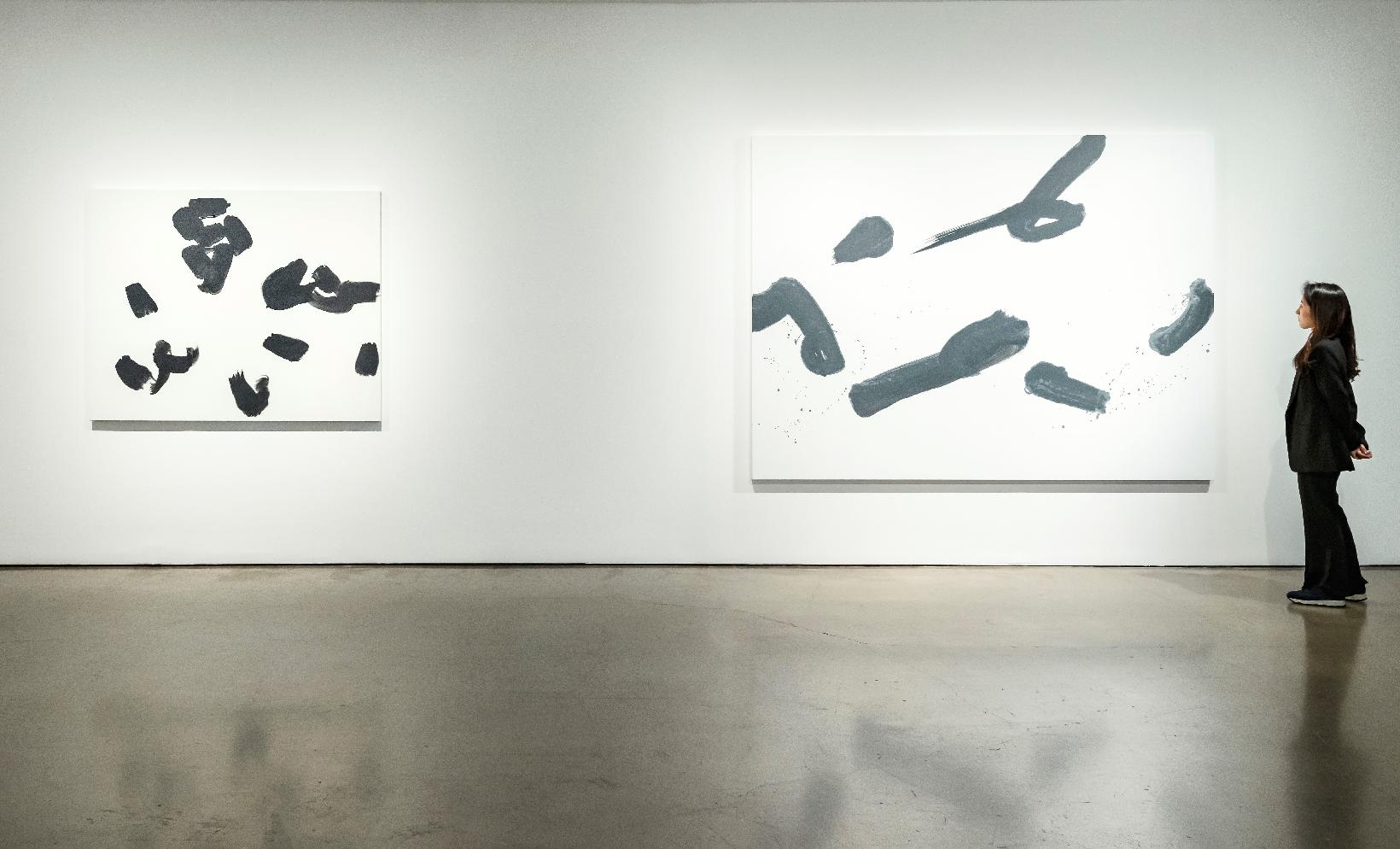
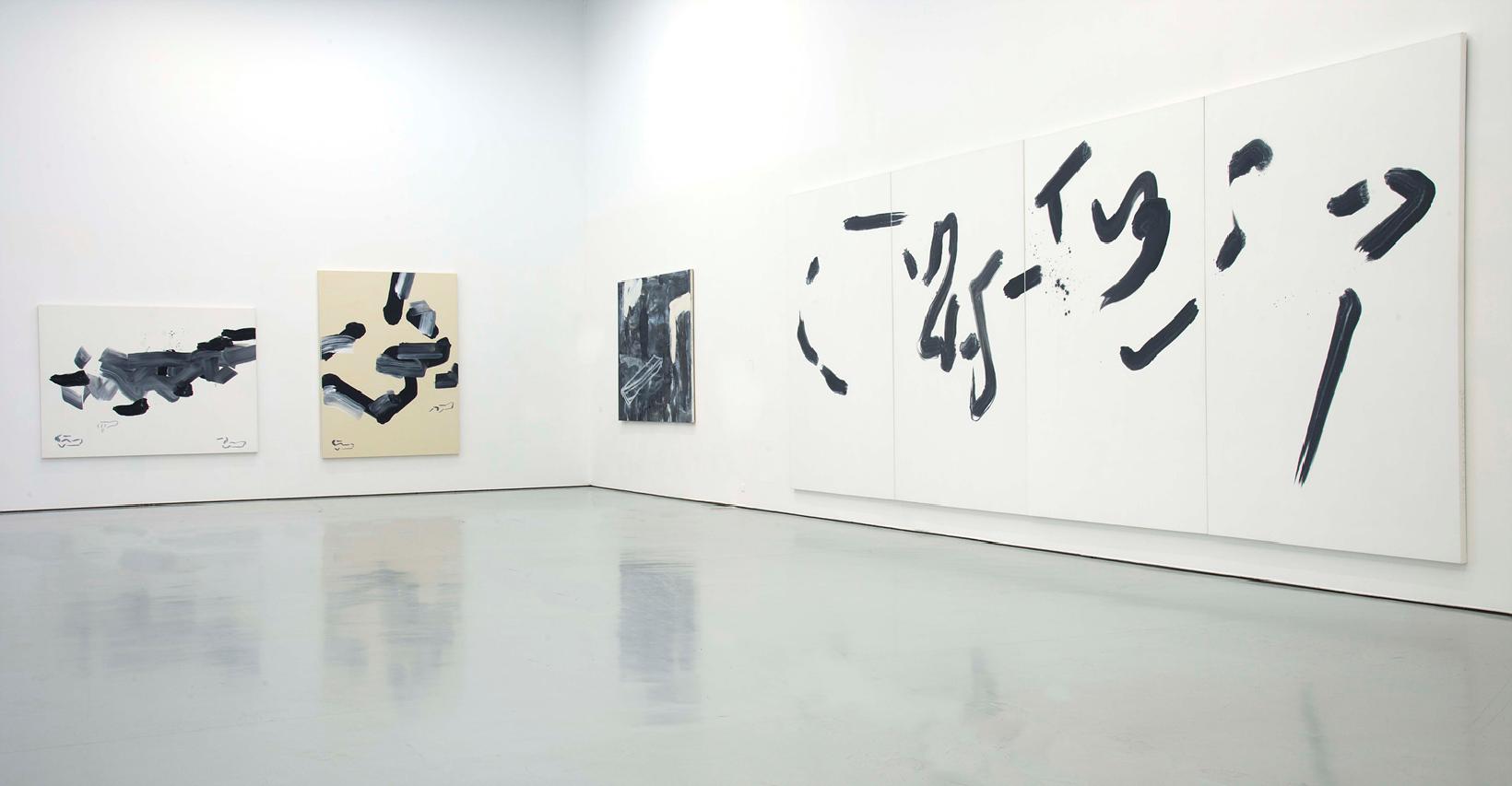
Could you comment on the relationship between paintings and conceptual works from 1970s in various media like video, performance, installation, sculpture, and so on?
Just as my paintings are made with unpredictable energy oscillating every instant, all my sculpture, ceramic and other performance pieces, such as Void (1971), Disappearance (Bar in the Gallery) (1973) , Nakdong River Event, coexist in this continuously transforming world.
Since around 1970, I had tried out experimental works in installation, performance, video, and so on. On the other hand, I recall that many artists had aimed to reinterpret the traditional system of painting or sculpture in a modern language and to create a new formality of painting and sculpture. For me as well, the realization of contemporary interpretation on 2-dimensional or 3-dimensional works was a difficult task and yet, the most desperate yearning.
I have doubted the actuality of the world we live in as I made works such as the reed piece Void and Disappearance (Bar in the Gallery) shown at Myeongdong Gallery. My skepticism about the reality became a driving force that encouraged me to make two-dimensional works in 1975.
If traditional sculptures were intentionally made, through Untitled-7522 (a broken stone), I wanted to create ones that “become.” Since 1981, I have attempted to produce sculptures that “become” with conventional sculpture materials like clay, plaster, and bronze.
Ceramics as unmolded chunks of clay opened up new possibilities, so I have started to produce a number of experimental sculptures since 2003. Since last year, I have gone through a process of selection, and I am currently seeking new ways of art practice.
Painting, sculpture, installation, performance, and all my works are not made by a specific self, but rather, they are created by a ceaselessly changing self that cannot be specified. In addition, I believe that a viewer from a 3rd person perspective is also shifting every split second in relation to the works.
My artworks only attempt to offer clues, which prompt these thoughts. I also approach my works from the same stance as the viewer’s. Therefore, I try to discover forms that appear differently every moment, either to myself or to others.
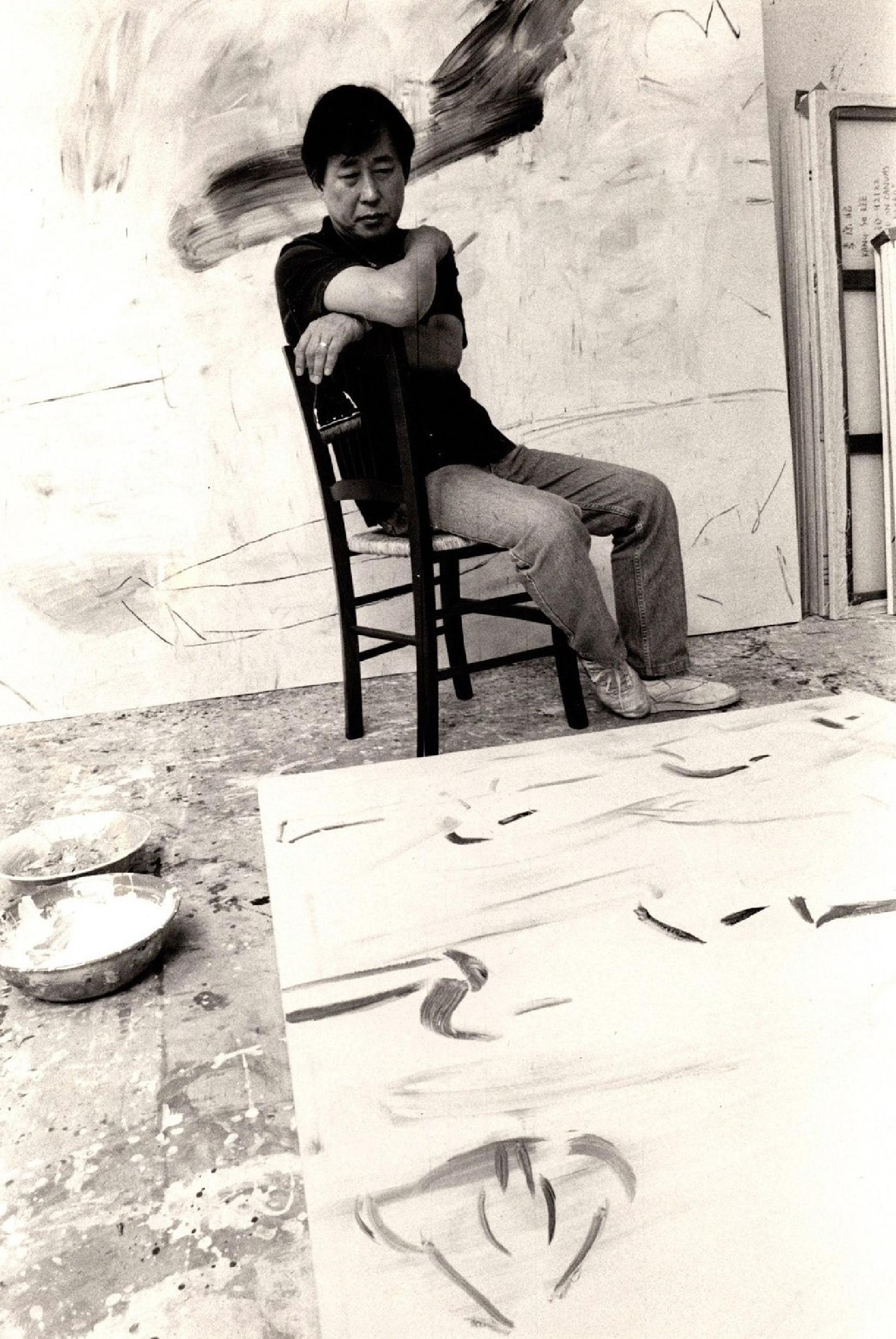
You have not only stressed the internal construction and formation of an artwork but indeed have always emphasized the interactions among the energy of all things in the universe.
When we say ‘universe,’ we often think of the sky. Nevertheless, it is funny how the infinite universe, in fact, exists within human introspection. We humans float in this grand universe like minute dust particles, picture illusions, and pursue them as the reality.
My paintings provide a source of inspiration for such illusions. I cannot illustrate a particular scene from the visual landscape or abstraction from my works. Moreover, just as the viewers, these elements of paintings and their interactions constantly shift.
What do you expect the viewers to experience from your work?
Enforcing the artist’s subjective expression and emotion to the viewers is a typical characteristic of Western modernism. A thought where all individuals consider themselves as the center of the universe is a zeitgeist from the 17th century to the late 20th century when the ideas of Descartes and Newton prevailed. These customs persist until the present day even after the development of the theory of relativity by Einstein in the 20th century and quantum mechanics by the Copenhagen schools. However, they will not be empathized in the contemporary period.
Along with the advancement of science, the thoughts and lives of humanity may inevitably undergo consequential changes. Art should also communicate and flow along with the scientific truth in a soft and beautiful manner. I would like to state that neither subjects nor objects exist as individuals in this world; we are networked in a mysterious, constantly vacillating world within the symphony of universe.
My artworks only attempt to offer clues, which prompt these thoughts. I also approach my works from the same stance as the viewer’s. Therefore, I try to discover forms that appear differently every moment, either to myself or to others.
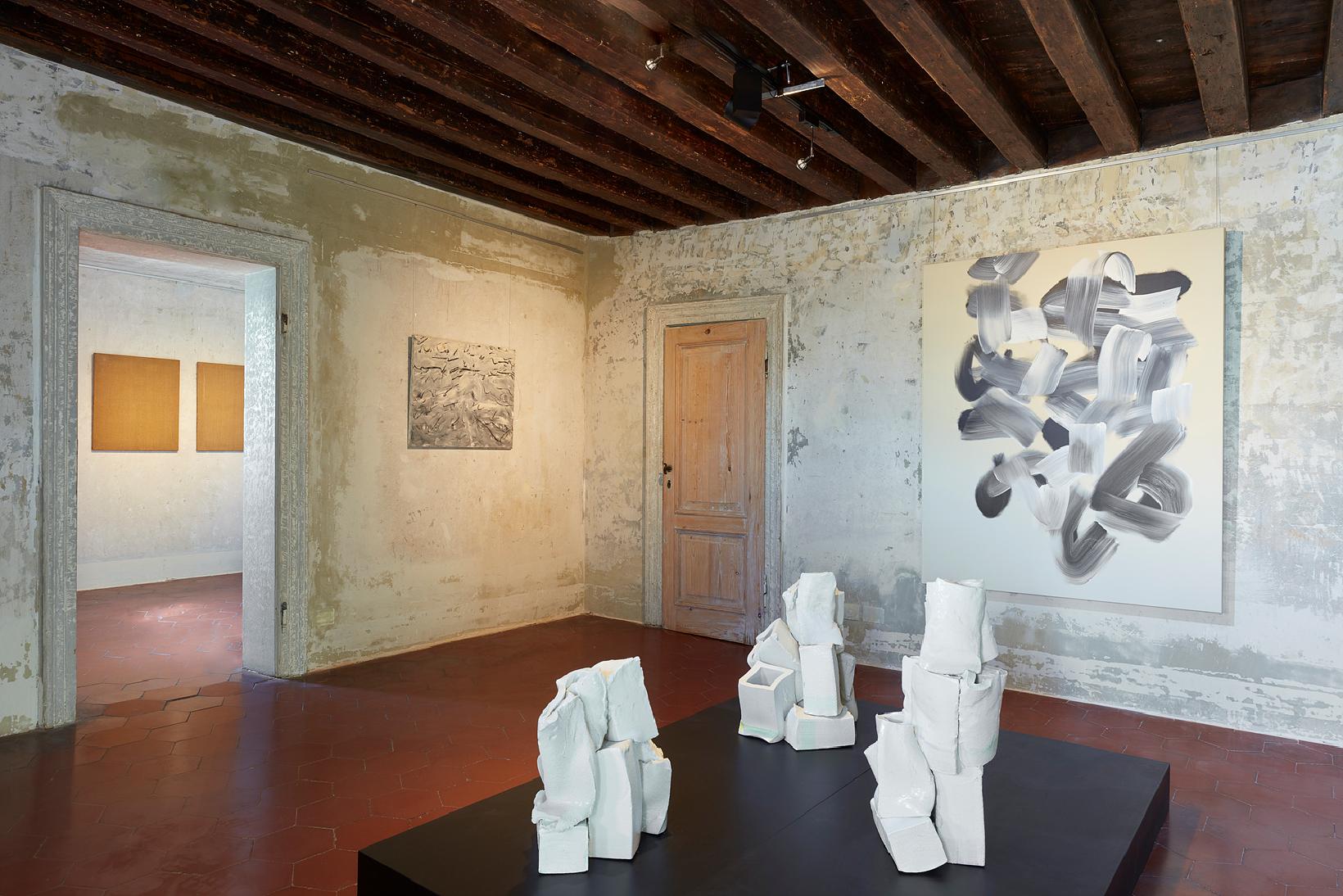

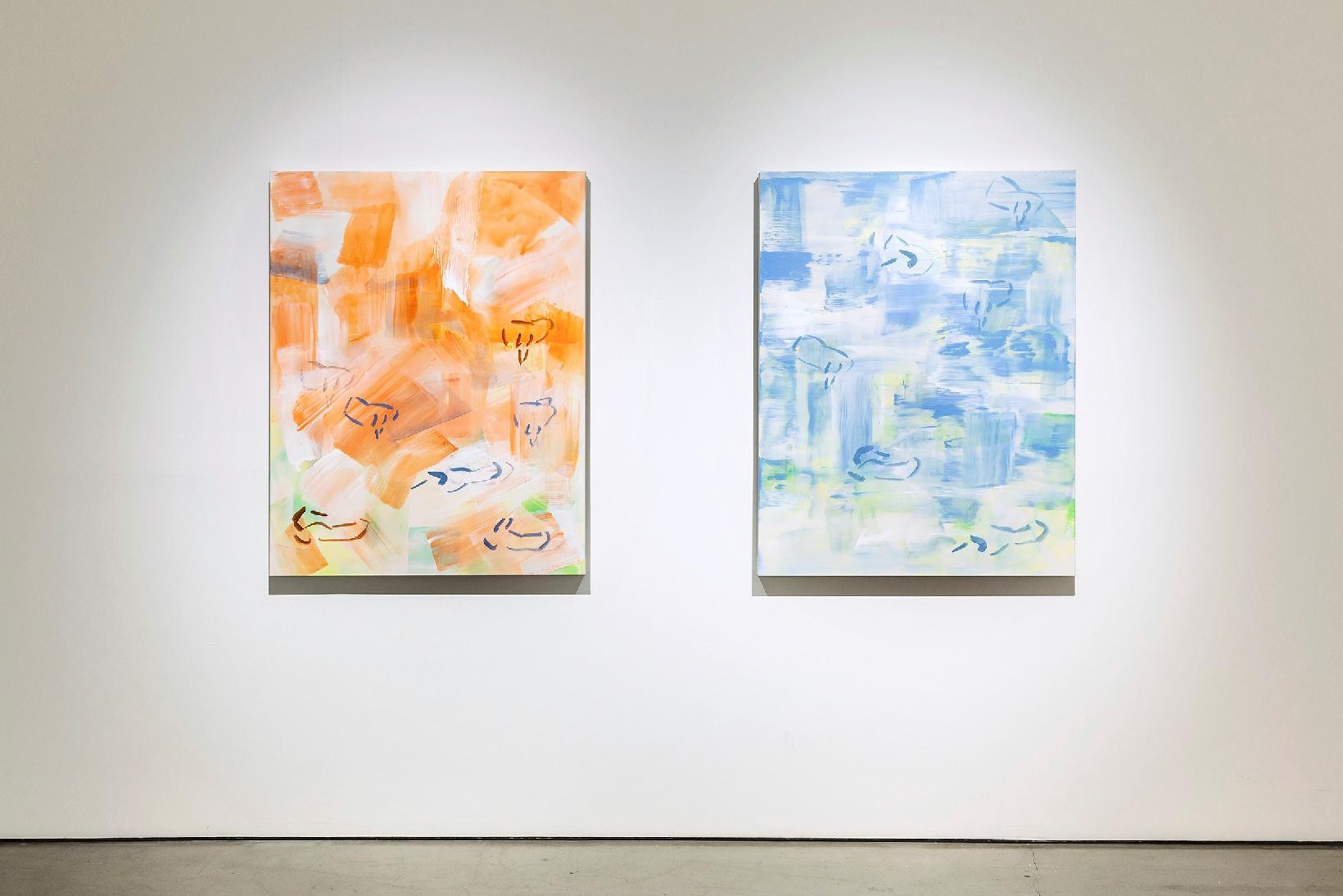
《몽유》전은 회화 작품만 엄선한 전시입니다. 전시에 공개되는 신작을 소개해 주시겠어요?
캔버스 작업들입니다. 매 순간마다 변화하는 저에 의해 그려지는 회화, 매 순간마다 조금씩 낯선 저에 의해 문자처럼 쓰여지는 회화, 그리고 순간 저에게 매혹적으로 자극을 준 색채에 의해 그려진 회화. 그리고 붓질의 느림과 빠름을 경험해 봤습니다. 계속해서 습관적인 붓질로부터 조금씩이나마 벗어나 보려고 노력하고 있습니다. 혹시 저의 회화를 보면서 어떤 이미지들이 떠오르신다면 그 떠오르는 이미지들 사이 찰나들의 간극, 금방 사라지겠지만 이를 반복해 보면서 또 다른 찰나의 간극을 간파해 내신다면, 하고 희망해 봅니다. 저는 직관이란 모험은 어떻게 가능할 것인가 하는 의문을 갖고 있습니다. 그리고 회화의 에너지가 관객에게 어떠한 자극을 줄 것인지에 대해 관심이 많습니다.
1970년대부터 현재까지 ‘회화란 무엇인가’를 끊임없이 질문해 오셨죠? 그 실험과 탐색 과정이 궁금합니다.
1970년대 중반, 저는 “현대”에 걸맞는 새로운 평면을 구현하고자 했습니다. 우선, 평면 회화란 어떤 구조로 형성되어 있는 것인지, 제 자신이 스스로 납득할 수 있는 분석적인 작업으로 출발해야겠다 생각했죠. 그래서 새삼스럽게 가장 기본적인 구조부터 확인해 보기로 했습니다. 예를 들면, 천으로 되어 있는 캔버스의 올 실을 몇 가닥 뽑아서 작업을 하거나, 나아가 캔버스 천에 이미지를 세리그래피로 찍은 다음 올을 한두 가닥 뜯어내어 물감을 살짝 묻혀 본다거나 하는 등의 작업을 경험했습니다.
1980년대 초중반에는 캔버스에 마구잡이로 붓질을 하는 새로운 모험을 시작했습니다. 그러나 결과는 아무리 마구잡이로 한다고 해도 어린 시절부터 지속해 왔던 습관에 따라 풍경화적인 붓질의 습관이 드러날 수 밖에 없었던가 봅니다. 가능하면 과거의 붓질, 습관적인 붓질로부터 좀 벗어나 예상하지 못했던 어떤 붓질을 하고자 희망하며 작업하고 있습니다.
붓의 오랜 역사는 우리에게 이것이 가장 민감하고도 강력한 기운을 공유할 수 있는 또 하나의 구조라는 것을 가르쳐 주고 있으며, 따라서 저는 새로운 경험의 붓질을 찾아 회화 작업을 지속해 가고 있습니다. 붓질의 세계는 살아있는 기(氣), 에너지의 교류입니다. 저는 맑고 밝은 기운을 드러내어 이것을 공유하고자 합니다.
1970년대 발표한 전위적이고 개념적인 영상, 퍼포먼스, 조각, 설치 등의 작품과 회화 작업 사이에는 어떤 관계가 있을까요?
저의 회화가 매 순간 예측할 수 없는 기운의 변화에 따라 작업이 이루어지듯이, <여백>, <소멸(선술집)>, <낙동강 이벤트>와 같은 조각, 세라믹, 퍼포먼스 작업들 모두 끊임없이 변화하고 있는 이 세계에 함께하며 존재하고 있습니다.
1970년경부터 저는 설치, 행위, 영상 작업 등 실험적인 작업을 지속적으로 해보고 있었습니다만, 한편으로는 전통적인 회화나 조소 형식을 현대적으로 재해석해서 새로운 평면, 새로운 조각의 형식으로 구현하고자하는 작가들이 다수 있었다고 기억하고 있습니다. 평면 혹은 조각의 현대적 해석의 실현은 제게 있어서도 어려운 일이지만 가장 절실한 희망이었습니다. 1971년 갈대 작품 <여백>, 1973년 명동화랑에서 선보인 <소멸(선술집)> 등의 작업을 하면서 이 현실의 세계가 의심스럽고 실재한다고 동의하기가 어려워졌던 저의 회의는, 1975년 평면 작업 출발의 새로운 동기가 되었습니다.
전통적인 방식의 조각이 “만드는” 조각이었다면, 저는 “만들어지는” 조각 <Untitled-7522>(깨어진 돌)을 시도해 보고자 했고, 조소의 방법으로 1981년부터는 점토와 석고, 브론즈 같은 전통적인 조소의 재료로 “만들어지는” 작업으로 시도해 오고 있습니다. 만들어진 점토를 주조하지 않고 그대로 구워내는 세라믹 작업은 저에게 새로운 조각의 가능성을 열어 주었고, 이를 계기로 2003년부터 현재까지 다수의 실험적인 작품을 제작하게 되었습니다. 작년부터는 선별 정리를 하고 있고, 이제는 새로운 작업을 모색하고 있습니다.
제가 하는 회화, 조각, 설치, 행위 등 모두가 특정한 제가 그리거나 만드는 것이 아니라, 순간순간 변하고 있는 ‘나,’ 특정할 수 없는 ‘나’에 의해서 그려지고 만들어지는 것입니다. 그리고 3인칭의 관객 또한 각자 순간순간 변화하며 관계하고 있다는 게 저의 생각입니다.
미술작품 내부의 구조나 형식에서 나아가, 선생께서는 우주 만물의 기운과 그 사이의 관계를 늘 강조해왔습니다.
우리들이 ‘우주’라고 하면 자연스럽게 하늘을 떠올리게 되는데, 인간의 내면으로 향해도 무한한 우주가 펼쳐져 있어 실로 어이가 없습니다. 우리는 이 엄청난 세계에서 너무나도 미세한 먼지처럼 떠돌아다니면서 환영을 그려내며, 그것을 현실이라고 믿으려 하고 있습니다. 저의 회화는 이들 환영의 실마리를 제공하는 것입니다. 작업의 시각적 풍경이나 추상은 저에게 있어서도 확실한 정경을 구조해 낼 수가 없습니다. 뿐만 아니라 그 작업들에 대해서는 3인칭의 관객들과 마찬가지로 매 순간마다 서로 다르게 작용하고 있을 뿐입니다.
관객이 작품을 보면서 어떤 경험을 하기를 기대하나요?
작가의 주관적인 표현과 감정을 관객들이 일방적으로 이입 받는 형식은 근대서구미술의 특징적인 형식입니다. 모든 사람들이 각기 세계의 중심이라고 하는 사고는 17세기부터 20세기 말에 이르기까지 데카르트나 뉴턴의 생각이 지배하던 시대의 정신입니다. 이러한 관습들은 20세기 초 아인슈타인의 상대성 원리나 코펜하겐 학파들의 양자역학의 개진 이후 지금까지 지속하고 있기도 하지만, 이는 현대라는 세계에서는 공감을 얻지 못할 것입니다.
과학의 발전에 따라 우리 인류의 사고와 삶은 끊임없이 변화해 갈 수 밖에 없을 것입니다. 예술 또한 과학적 진리와 함께 부드럽고 아름다운 방식으로 소통하고 향유해야 할 것입니다. 주체도 객체도 따로 있는 것이 아니라 매 순간 끊임없이 변하는, 그야말로 온 우주가 심포니를 연주하는 신비한 세계 속에서 우리가 구조되어 있다고 해도 될는지 모르겠습니다.
지금 제가 하는 작업은 이러한 생각들의 실마리를 제공해 보고자 노력할 뿐, 저 역시 관객과 같은 입장으로 이를 대할 뿐입니다. 그래서 제 작업은 저 자신이나 관객들에게 보는 순간마다 달리 보일 수 밖에 없는 그런 형식을 찾고자 노력합니다.